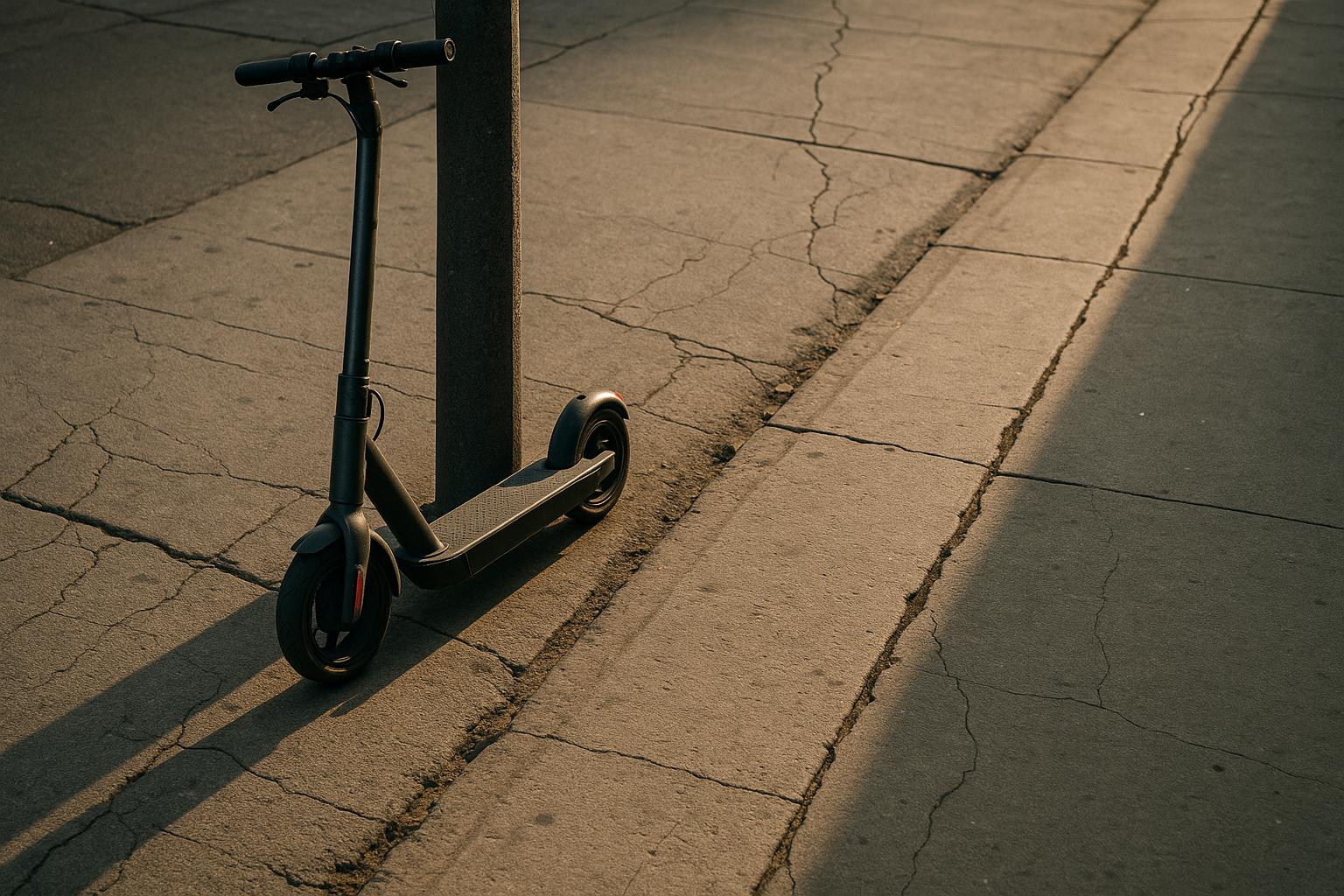Electric bikes and scooters ridden or parked on pavements are increasingly creating hazardous conditions for blind and partially sighted pedestrians, according to a new report from the Royal National Institute of Blind People (RNIB). The study, involving 1,197 respondents, reveals pervasive fear and anxiety among this community, with only 9% feeling confident walking in their own neighbourhood due to the proliferation of micromobility vehicles on pedestrian pathways.
A staggering 92% of those surveyed reported having to step onto roads to avoid obstacles such as parked e-bikes, scooters, and cars blocking the pavements, exposing them to greater risks from traffic. More than a third of respondents had collided with street obstacles in the previous three months. One participant described how their guide dog was withdrawn because it became too stressed navigating obstructed pavements, leaving them reliant on a cane.
The widespread introduction of dockless rental schemes for electric bikes and scooters, meant to improve urban mobility, has inadvertently worsened pavement clutter. Users are supposed to park responsibly, but frequently leave vehicles scattered, diminishing safe pedestrian space. Erik Matthies, RNIB’s travel and transport policy lead who has sight loss, said the increasing number of obstacles, including advertising boards and parked cars, makes independent travel difficult and exhausting. He highlighted the additional stress caused by e-bikes and e-scooters sometimes passing close by at speed without warning.
The RNIB calls for government action to create and enforce inclusive pavement standards, ensuring accessibility is maintained even during roadworks and better regulation of rental schemes. The charity also urges local authorities to curb reckless parking and monitor the behaviour of food delivery courier cyclists, whose frequent stops further impede safe passage. In addition, it advocates for pavements to be marked with detectable kerbs and accessible crossings, which are vital for safe navigation by those with sight loss.
The Department for Transport has acknowledged the importance of safety and confirmed that private electric scooters remain illegal on public roads. A spokesperson said they are developing new powers to regulate e-bikes and e-scooters more effectively, enabling local authorities to shape schemes to local needs and address issues caused by badly parked vehicles. According to recent DfT figures, 52 pedestrians suffered serious injuries in collisions with e-scooters in England in 2023, underscoring the risks posed by these vehicles.
Local government representatives emphasise the need for stronger regulation, particularly given the estimated one million privately owned e-scooters that remain illegal and lack safety restrictions. Tom Hunt, chair of the Local Government Association’s inclusive growth committee, called for greater government intervention to manage illegal private e-scooters and unlicensed electric motorbikes masquerading as e-bikes, which complicate efforts to maintain safe public spaces.
The RNIB also draws attention to the challenges posed by quiet vehicles such as electric cars and scooters in disrupting important street landmarks and safety features like detectable kerbs, pelican crossings, and raised cycle lanes. It cautions against ‘shared space’ concepts without physical segregation between pedestrians and cyclists, advocating instead for cycle lanes to be taken from roads rather than pavements to protect vulnerable users with sight loss or other disabilities.
Beyond pavement clutter, the RNIB stresses that the rise in dockless vehicles forces many blind and partially sighted people to make risky choices, frequently stepping into roadways to bypass obstacles, which increases accident risk. The charity has launched surveys to gather further data on how new transport infrastructure, including e-scooters and e-bikes, impacts this community’s confidence and independence in travel.
In Europe and other parts of the world, the surge in e-scooter usage has prompted calls for improved infrastructure such as designated lanes and parking to reduce sidewalk clutter and accidents, highlighting the delicate balance urban planners must strike between fostering innovation and ensuring public safety. As cities continue to embrace micromobility, the experiences and safety of vulnerable pedestrians must remain a focal point in the design and regulation of these emerging transport modes.
📌 Reference Map:
- Paragraph 1 – [1], [2]
- Paragraph 2 – [1], [2]
- Paragraph 3 – [1]
- Paragraph 4 – [1], [2], [4]
- Paragraph 5 – [1]
- Paragraph 6 – [1]
- Paragraph 7 – [1], [6]
- Paragraph 8 – [3], [7]
- Paragraph 9 – [5]
Source: Noah Wire Services
